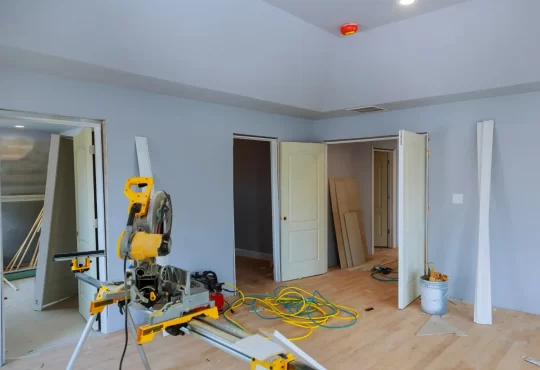
A professional development plan has also some other names like Employment Development Plan, PDP in short form or Individual Development Plan. It means to put your career goals upon the document and set out a strategy of how you will reach them.
One needs a tremendous amount of time and planning to create a PDP. However, writing and implementing it can help someone to recognize and develop the professional skills required to fulfill their target, which means keeping you on the right track.
This process lets you acquire your potential skills, meet your target and take responsibility for your professional development.
Having given you a clear concept of the PDP, we are now moving further to tell you how to write a Professional Development Plan.
9 valuable tips to write a Professional Development Plan or PDP:
- know your current position
How your career is moving forward? Evaluation of your current career situation is the best way to start. The following are the questions you must ask yourself:
What have you been doing over the last 1 year, 3 years or 5 years to help your professional growth?
Are you exactly there where you thought you would be at this career phase?
In case of having nothing or no, it’s wise to start with a professional development plan or PDP. Despite being not your answers, the step taken will give you an opportunity to evaluate the efficacy of the strategies and actions taken by you in the past.
- Ask yourself your own career goals
What do you want to have or where do you want to be? It takes a great deal of time to answer such questions. The best way to do so is to calm down, sit somewhere quiet ask this question. Still, confused? Ask yourself the questions laid down below:
What’s the definition of success to you?
Is it a financial, managerial position or a promotion or last but not least the dream to start your own business?
There are innumerable definitions of this word. That’s why it takes your deep attention to be answered honestly.
What do you love to do most? Are the activities involved in the current job you are doing? If your answer is no, then can you change this? Can you smell the fragrance of success in your present job?
Where do want to reach after 5 years or 10 years? It’s wise to identify your long-term goals.
You tend to be afraid of defining your long or short-term goals. It can consume a long time and a great deal of thought. Such things can be unique and a little confusing for you. But, that’s okay? Always keep in mind that you must think big. It is because if you have a proper PDP, you can achieve anything. You’d better ensure that your goals are ‘SMART’: whose full form is given below:
- specific
- measurable
- achievable
- realistic
- timely
assess your professional knowledge and skills:
So far, you should have got it clear what professional skills and knowledge are important reaching your goal, stop for a minute and think about those ones you are already good at.
Knowing your current flaws and plus points is very important. They let you know where you can perform better and where you need to improve or work hard.
For example: if you want to be an engineer, then having a thorough engineering competency assessment is wise. It will give you a broad idea of your capability. If you are unable to do so on your own, then taking professional consultation from an engineer assessment authority or expert is wise.
- try hard to gain information
What are the skills and knowledge necessary to take you to your desired destination? Having identified your long and short-term goals, conducting deep research to know what you need to achieve them is very important for you. Know the skills that can help you hit the bull’s eye in the interview, thus, making you a perfect candidate.
If your goal sounds very unrealistic at first glance, then you’d better split it into simple steps. Let’s take an example to clarify this point:
If you want to be an Area Manager, know the small steps leading to your target. it could start from being a supervisor, then becoming Team Manager and in the end Area Manager. The jobs mentioned here have different skill needs, and when you break them into simple individual steps, then you will be in a position to create a better plan.
It’s wise to meet your manager, as they can guide you best about the areas your need to focus on. Moreover, they will also let you know the opportunities for this. Pay deep attention to the skills and criteria you must have to reach there, and start your journey calmly and in small steps.
Last but not least, the more you are away from your comfort zone, the more sharp-minded you become. So, avoid your comfort and convenience and keep working hard.
- think of a feasible strategy
Having known the areas for improvement, you should now decide how you will do all required. You must keep in your mind that your professional development must be strategic, job-embedded and continuous.
Make a strategy to stay in touch with the new technology related to your field. Learn to improve the skills required in your PDP. You must not forget that persistence is key here. So, keep working hard continuously.
- fix a time
To avoid procrastination, you must prepare a timeline to fulfill your goals to keep yourself energetic, alert and motivated.
Plan everything on an annual basis. You should give each step more time than you think is needed. You must plan your targets according to opportunities that may come to you.
The more strictly you follow this timeline, the more energized and encouraged you will feel; there will be an air of discipline around you.
- put all on paper
Always keep your Professional Development Plan with yourself, and change or alter it when needed. It will also help you remember goals and the steps you made to achieve them. You must see your PDP on a daily basis right before going to bed and just after waking up in the morning.
Furthermore, a detailed list of the skills required will also let you know where to move.
- don’t forget the assessment of your plan
Having prepared your PDP, you must assess it carefully. You must keep in your mind that your goals and the steps prepared to achieve them are specific, feasible, measurable, and timely.
Baseless and imaginary steps and goals are nothing but a headache, which will demotivate you in the future if not achieved. Here, you need to be logical and wise. If you feel nervous or confused, then taking advice from a sophisticated person around you is prudent.
- keep checking your progress and achievement
How close you are to your target, and are you achieving them at a fixed time? Ask yourself such questions. By doing so, you will also know whether you have made an illogical plan or something unrelated to your target. Make new targets in such cases without wasting any time.
Don’t forget the ways, strategies, methods, and techniques may change, which can lead to some minor to major changes in your goals. Therefore, be prepared for that. Moreover, learn from your mistakes; whenever in doubt or need, go to an expert and take their advice before moving in a particular direction.
Having known the ways to prepare a Professional Development Plan, you must ask yourself whether you need some professional guidance or not. If you need, feel free to reach us.




